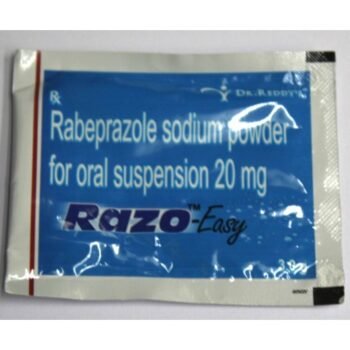What is AIRTIO?
- AIRTIO contains Formoterol and Tiotropium Bromide
- Formoterol belongs to a group of medicines called ‘long-acting beta-agonists’ or bronchodilators’
- Tiotropium Bromide belongs to a group of medicines called anticholinergic bronchodilator
What AIRTIO is used for?
It is used to treat,
- Asthma
- Chronic obstructive pulmonary disease (COPD)
Warning & Precautions
Talk to your Doctor, if you:
- Are allergic to formoterol, tiotropium or any other ingredients of this medicine
- Are diabetic
- Have high blood pressure
- Have heart attack (myocardial infarction) during the last 6 months, or irregular heart beat
- Severe heart failure in the past year
- Have problems with your thyroid gland
- Have low levels of potassium in your blood
- Have severe liver problems such as liver cirrhosis
- Have narrow angle glaucoma
- Have prostate problems or have difficulty passing urine
- Have any kidney problems
Tell your doctor if you are taking:
- Beta-blocker medicines (such as atenolol or propranolol for high blood pressure), including eyedrops (such as timolol for glaucoma)
- Medicines for a fast or uneven heart beat (such as quinidine)
- Digoxin, often used to treat heart failure
- Diuretics (such as furosemide)
- Steroid medicines that you take by mouth (such as prednisolone)
- Xanthine medicines (such as theophylline or aminophylline)
- Erythromycin (used to treat infections)
- Anti-histamines (such as terfenadine)
- Other substances that dilate the airways (bronchodilators, such as salbutamol)
- Ephedrine (used to treat asthma or as a decongestant)
- Tricyclic anti-depressants (such as amitriptyline)
- Ipratropium or oxitropium used to treat COPD
- Methylxanthines e.g. theophylline
Directions & For Use
- Always use this medicine exactly as your doctor has told you
- Pull the cap upwards
- Hold the base of the inhaler firmly and open the mouthpiece by pulling it upwards, in the direction of the arrow
- Remove a AIRTIO from the bottle immediately before use and close the bottle tightly. Place one medicine in the capsule-shaped compartment in the base of the inhaler. Do not store the medicine in the inhaler
- Never place a medicine directly into the mouthpiece. Close the mouthpiece until you hear a click, leaving the cap open
- Hold the inhaler with the mouthpiece upwards, and firmly press the piercing button completely in only once. Release the button. This will pierce the medicine and allows the medication to be released when you breathe in Breath out fully. It is important to do this away from the mouthpiece. Avoid breathing into the mouthpiece at any time
- Place the mouthpiece in your mouth and keep your head in an upright position. Close your lips around the mouthpiece and breathe in slowly and deeply enough to hear or feel the medicine vibrating inside the compartment. Hold your breath for as long as you comfortably can whilst taking the inhaler out of your mouth. Then breathe normally. Repeat steps 7 and 8 to empty the medicine completely
Side Effects
Like all medicines, this medicine can cause side effects, although not everybody gets them.
Formoterol
- Bronchospasm (tightening of the muscles in the airways which causes sudden wheezing)
Tiotropium Bromide
- Allergic reactions such as swelling of the face or throat (angioedema), dizziness
- Shortness of breath
- Unexpected tightness of the chest, coughing, breathlessness immediately after inhalation (known as bronchospasm)











Reviews
There are no reviews yet.